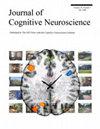The Mindful Brain: A Systematic Review of the Neural Correlates of Trait Mindfulness
IF 3.1
3区 医学
Q2 NEUROSCIENCES
引用次数: 0
Abstract
Trait self-report mindfulness scales measure one's disposition to pay nonjudgmental attention to the present moment. Concerns have been raised about the validity of trait mindfulness scales. Despite this, there is extensive literature correlating mindfulness scales with objective brain measures, with the goal of providing insight into mechanisms of mindfulness, and insight into associated positive mental health outcomes. Here, we systematically examined the neural correlates of trait mindfulness. We assessed 68 correlational studies across structural magnetic resonance imaging, task-based fMRI, resting-state fMRI, and EEG. Several consistent findings were identified, associating greater trait mindfulness with decreased amygdala reactivity to emotional stimuli, increased cortical thickness in frontal regions and insular cortex regions, and decreased connectivity within the default-mode network. These findings converged with results from intervention studies and those that included mindfulness experts. On the other hand, the connections between trait mindfulness and EEG metrics remain inconclusive, as do the associations between trait mindfulness and between-network resting-state fMRI metrics. ERP measures from EEG used to measure attentional or emotional processing may not show reliable individual variation. Research on body awareness and self-relevant processing is scarce. For a more robust correlational neuroscience of trait mindfulness, we recommend larger sample sizes, data-driven, multivariate approaches to self-report and brain measures, and careful consideration of test–retest reliability. In addition, we should leave behind simplistic explanations of mindfulness, as there are many ways to be mindful, and leave behind simplistic explanations of the brain, as distributed networks of brain areas support mindfulness.正念大脑:正念特质的神经相关性系统回顾》(The Mindful Brain: A Systematic Review of the Neural Correlates of Trait Mindfulness.
特质自我报告正念量表测量的是一个人对当下不加评判地关注的倾向。有人对正念特质量表的有效性表示担忧。尽管如此,仍有大量文献将正念量表与客观的大脑测量相关联,目的是让人们了解正念的机制,以及相关的积极心理健康结果。在此,我们系统地研究了正念特质的神经相关性。我们评估了结构性磁共振成像、基于任务的 fMRI、静息态 fMRI 和脑电图的 68 项相关研究。我们发现了几项一致的研究结果,即更高的正念特质与杏仁核对情绪刺激的反应性降低、额叶区域和岛叶皮质区域的皮质厚度增加以及默认模式网络内的连接性降低有关。这些发现与干预研究和包括正念专家的研究结果一致。另一方面,正念特质与脑电图指标之间的联系仍无定论,正念特质与网络间静息态fMRI指标之间的联系也是如此。用于测量注意力或情绪处理的 EEG ERP 测量可能不会显示可靠的个体差异。有关身体意识和自我相关处理的研究还很少。为了对正念特质进行更稳健的相关神经科学研究,我们建议采用更大的样本量、数据驱动的多变量方法来进行自我报告和大脑测量,并仔细考虑测试-再测试的可靠性。此外,我们应该抛弃对正念的简单化解释,因为正念的方式有很多种;我们也应该抛弃对大脑的简单化解释,因为支持正念的是分布式脑区网络。
本文章由计算机程序翻译,如有差异,请以英文原文为准。
求助全文
约1分钟内获得全文
求助全文
来源期刊
CiteScore
5.30
自引率
3.10%
发文量
151
审稿时长
3-8 weeks
期刊介绍:
Journal of Cognitive Neuroscience investigates brain–behavior interaction and promotes lively interchange among the mind sciences.

 求助内容:
求助内容: 应助结果提醒方式:
应助结果提醒方式:


